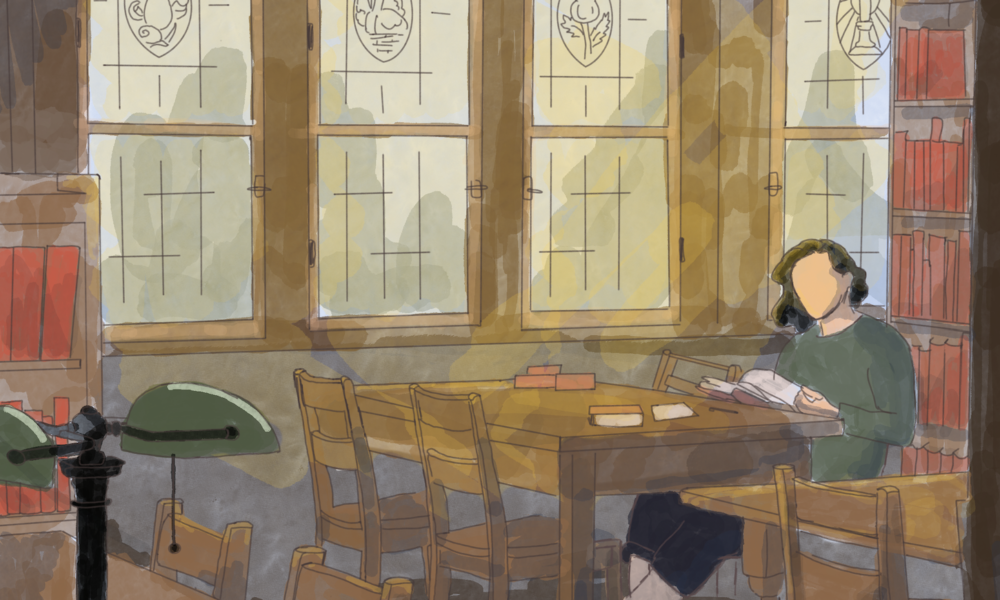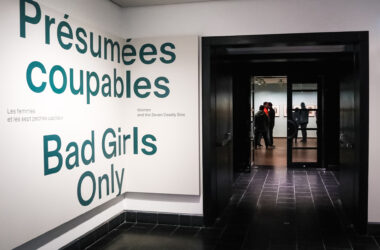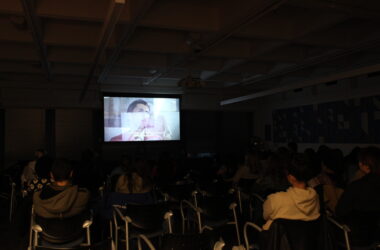Eugene Onegin by Alexander Pushkin (RUSS 223: Russian Literary Giants 1) – Isobel Bray, Contributor
Eugene Onegin is a timeless novel-in-verse set in 19th-century Russia. It follows the titular aristocrat, who, after inheriting his uncle’s estate, retreats to the countryside. Eugene is bored with high society and indifferent to those around him. He meets personalities like the poet Vladimir Lensky and young, intelligent Tatyana Larina. The verse form only enhances the story, as Pushkin blends social commentary with his melodic and emotional writing. His portrayal of Russian high society is sharp and often ironic, yet never fully devoid of empathy. What stood out to me was the realism of the characters—flawed, human, and heartbreakingly self-aware. Onegin, with his cynicism, is both frustrating and strangely familiar. Lensky, the doomed romantic, is his foil: Idealistic and earnest in a world that doesn’t reward it. The narrator is a character unto himself, breaking the fourth wall with asides that feel surprisingly modern. Pushkin reflects on his own youth, writing, and memory with a tone that is both playful and melancholic. Despite being written two centuries ago, Eugene Onegin is filled with moments that speak to the present about identity, image, and the consequences of not acting when it matters.
Lolita by Vladimir Nabokov (ENGL 227: American Fiction after 1945) – Bianca Sugunasiri, Staff Writer
Content warning: Pedophilia, Kidnapping, Sexual Assault
Fresh out of high school and heady with literary ignorance, I was met with a rude awakening in the form of Vladimir Nabokov’s Lolita. I was thrown from my comfortable world of sheltered grade-school literature into one of the most viscerally disturbing novels I have ever encountered. The thought of devoting time to dissecting the first-person account of a repulsive pedophile was terrifying. I was further disturbed by the Vanity Fair review quote printed on the back of my copy: “The only convincing love story of our century.” Everything in me was primed to reject the novel. But one class, my professor said something that turned my perspective on its head. He challenged the notion that Lolita was a sick fantasy, but was instead designed as a rebellion from the modernist notion of “art for art’s sake.” The novel is widely known for its unexpectedly embellished prose that flows artfully like poetry. Contrasted with the uncomfortable ideas that Nabokov presents, it makes a sadistic mockery of the Aesthetic Movement. All of a sudden, the novel went from a glorification of inhuman immorality to a meticulously crafted protest for me. Although it is impossible to know what Nabokov truly intended, the man insisted that there should not be a child anywhere in the book design. This is not a love story, but an exposé of the parts of humans we deign to forget: Discomfort deliberately wielded to elicit change.
Jazz by Toni Morrison (ENGL 505: Sound, Voice, Music, Noise) – Kellie Elrick, Arts & Entertainment Editor
Content warning: Violence, feminicide
Last summer, I was on a transatlantic flight from Rome to Toronto when a fuse blew, knocking out the electricity in my part of the plane. This is how I first read Jazz—in one sitting, in close quarters, hurtling at top speed over the sea in a lightly malfunctioning airplane. It knocked me out. The narrative twisted and turned, screaming, singing, breathing. I encountered it again in a seminar in the fall and remained enraptured by the text. Jazz changed what I thought a novel could be. The narrative speaks to itself, echoing between chapters, calling and responding in non-chronological order. The present moves forward into the past, which in turn responds to the present, engaging in an oral tradition that rebels against its written form, speaking at once from Harlem in 1926 and Virginia in 1888. Morrison’s novel sings of Black womanhood, history, modernity, music, enslavement, violence, what’s unspoken, what’s heard, freedom to act, freedom to speak, freedom to be; Joe shoots his young lover Dorcas; his wife Violet slashes Dorcas’s face in her casket, and the novel shoots off into the present, past, and future all at once. It begins with a sound—sth—and ends with a call: “Say make me, remake me. You are free to do it, and I am free to let you because look, look. Look where your hands are. Now.”
Crime and Punishment by Fyodor Dostoevsky (RUSS 224: Russian Literary Giants 2) – Charlotte Hayes, Arts & Entertainment Editor
On a Wednesday night in the dead of February sometime last year, I came to a sudden, horrible realization: I needed to be on page 300-and-something of Crime and Punishment by 11 a.m. the next day—and I had yet to crack open the book. Although I’m not proud of this (and by no means endorse the following actions), what transpired over the next 16 hours was nothing short of transcendent. I sat down on my couch and just started reading. The floorboards of my empty Plateau apartment creaked. Cold air squealed through its barely sealed doors. I sat hunched on the couch, eyes glued to the page. Hours passed in a blur of plot twists, coffee, and sleep-deprived delirium. Maybe it was heart-pounding guilt-by-proxy brought on by Dostoevsky’s prose, or maybe it was just 5 a.m. Still, I’ve never felt more connected to an objectively awful person than to Rodion Raskolnikov. Reading Crime and Punishment shifted how I view literary canons. For the first time—outside of Shakespeare or a few biblical parables—I grasped how a piece of writing can ripple across art forms. From later Russian novels to the moral puzzles of ‘70s Hollywood cinema, Dostoevsky’s tale of guilt, greed, and moral ambiguity in redemption has proved enduring and unsettling. I may not have known it then, but sitting groggy in a conference on four-ish hours of sleep the next morning was exactly what I needed to round out my university experience.









